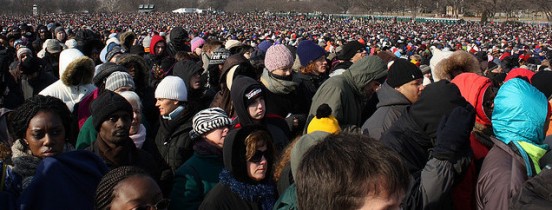 In my last post, Arts Predispositions I: Yeses, I introduced the notion of categories in the universe of those who do not take advantage of the arts we present. This thinking is based on work of Bradley Morrison and Julie Dalgleish in the early 1990’s presented in Waiting in the Wings. A central feature of that book was an understanding of the population as a whole being divided into Yeses, Maybes, and Noes with respect to arts participation. Yeses were those predisposed to be arts patrons. Noes were infants, the infirmed, and the incarcerated. All others were considered to be Maybes.
In my last post, Arts Predispositions I: Yeses, I introduced the notion of categories in the universe of those who do not take advantage of the arts we present. This thinking is based on work of Bradley Morrison and Julie Dalgleish in the early 1990’s presented in Waiting in the Wings. A central feature of that book was an understanding of the population as a whole being divided into Yeses, Maybes, and Noes with respect to arts participation. Yeses were those predisposed to be arts patrons. Noes were infants, the infirmed, and the incarcerated. All others were considered to be Maybes.
My gloss on that is to further subdivide those groups and, to an extent, expand the range of Noes. This is the outline of the current state of my thinking:
Arts Predispositions
Yeses
Maybes
- Backsliders
- Blissfully Unaware
- Apathetes/Agnostics
Noes
- Cultural
- Structural
- Actual
What follow picks up from my last post.
Maybes
Maybes are potentially “winnable” without significant alteration in programmatic content. They share sufficient cultural background with work presented by the arts institution for it not to feel completely foreign or unwelcoming. However, culturally conditioned norms with respect to dress, decorum, or demeanor in arts presentation settings can be off-putting to a degree that makes engaging with them difficult. Addressing these issues is often necessary in efforts to reach Maybes. (The National Endowment for the Arts 2015 publication, A Decade of Arts Engagement–NEA Research Report #58, identified a category–“interested non-attendees”–that is parallel to the Maybes discussed here.)
The tongue-in-cheek categories suggested here subdivide Maybes in ways that might be helpful in developing plans for reaching them. In each case, real consideration must be given to messaging, times/venues, complementary experiences, and, most importantly, relationship building.
- Backsliders
In religious circles, backsliders are sometimes defined as saved persons who have fallen into sin. For the purposes here, this category consists of those who have arts experiences but for some reason are no longer active. A large subset of this group may be those who have been brought into the arts–usually performing arts–through some form of “pops” presentation but have not maintained a relationship with the organization that did so.
Backsliders have sufficient interest, education, or experience to have made arts participation part of their life in the past but no longer make it enough of a priority to attend arts events. Understanding their reasons for non-participation is critical to engaging with this group.
- Blissfully Unaware
The “blissfully unaware” have no negative experiences or attitudes toward the arts but have simply not ever had arts participation occur to them as an option to consider. They may have some general cultural baggage of the “the arts are not for me” kind, but this is not an article of faith for them. The arts are simply not on their radar screen.
- Apathetes/Agnostics
Related to the blissfully unaware, apathetes/agnostics are aware of the arts as an option but simply have no opinion about or pull toward arts consumption or participation. Again, since they have little negative predisposition they are “winnable,” but intentionality of effort is required.
Next time: Noes
(Still exciting, right?)
Engage!
Doug
